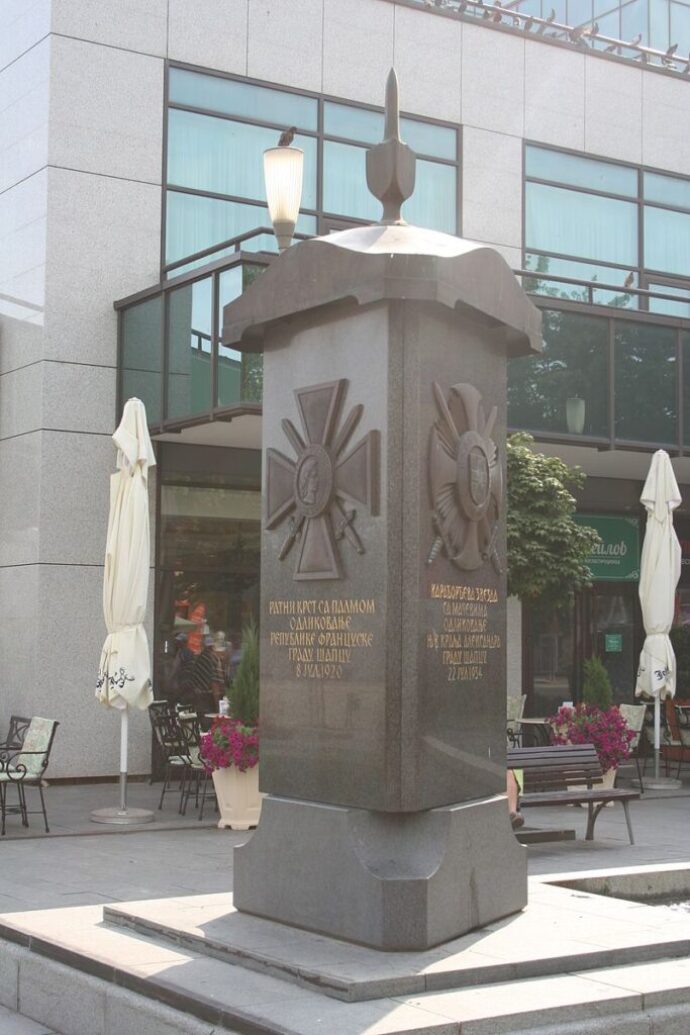Tips for planning your free time
Planning your free time during your stay at Hotel Protić is crucial in order to make the most of your stay at our hotel. Here are some tips on how to fully enjoy all the benefits we offer:
Take advantage of the sports facilities: Hotel Protić offers top sports facilities including a sports center equipped for sports training, a gym and opportunities for outdoor recreation. Use these facilities to keep fit or organize sports activities with friends and family.
Relax in the SPA center: Indulge in relaxing treatments and massages in our luxurious SPA center to renew your energy and refresh your body and spirit. Take advantage of all the benefits of our wellness center for complete relaxation.
Explore local attractions: Šabac offers a rich cultural and natural heritage. Visit nearby landmarks, museums and parks to learn about the beauty and history of our city.
Organize social activities: Make use of our common areas and organize board games, movie nights or evening events with other guests to create unforgettable memories.
Don’t forget to contact us if you want additional information or recommendations about activities during your stay. Your satisfaction is our priority, and we look forward to being part of your unforgettable experience at Hotel Protić.
What to see in Šabac?
Monument with three decorations
A terrible disaster struck the city during the First World War. Large military operations that took place in the immediate vicinity did not spare Šabac either. The city was destroyed, burned, the population was cut in half. Of the 14,000 inhabitants before the war, barely 7,000 survived. The number of remaining houses was less than half. The enemy did not spare even the city church, schools, hospital, and private houses.
“Sabac was a rich town, cheerful, trading, clean – today it is a pile of ruins,” noted Archibald Rice. Perhaps one of the most poignant sentences that speaks of the terrible crimes and suffering of the city is the one that Pavle Popović wrote in his diary: “If you saw Šabac, you would not forgive”.
Šabac stands out again in Serbia, but this time because of his suffering, which is why he received the name Serbian Verdun and three unique decorations: the French War Cross with Palm in 1920, the Czechoslovak War Cross in 1925, for which Pocerska Street was named after the first Czechoslovak to President Tomas Masaryk and the Star of Karađorđe with swords of the IV order from his country.
As a sign of memory and with the intention of not forgetting, the city of Šabac erected this memorial in 2008, which is the work of sculptor Mija Tomanić.
Petkovica Monastery
Thirty kilometers away from Šabac, in the idyllic village of Petkovica, there is a monastery that defies time – the Petkovica Monastery. Its origins go back to the time of King Dragutin, and according to archaeological findings, it originates from the second half of the 13th century. With the arrival of the Turks in these parts in 1521, the monastery was abandoned, but not for long. Already in 1561, the bishop from Zvornik visited the monastery church, which clearly shows that the monastery has revived.
During the 16th and 17th centuries, copying schools existed and worked in Petkovica, and after the Austrian conquest of these regions in 1718, the monastery also served as a school for training priests. During the uprising, after the Battle of Mišar, the Turks destroyed churches and monasteries throughout Mačva, including the Petkovica Monastery.
After the liberation from the Turks, the monastery was rebuilt, but again suffered destruction in the First and Second World Wars. Today, Petkovica is one of the most beautiful and well-organized monasteries of the Orthodox Eparchy of Šabac, a testimony to the history and spirituality of these regions.
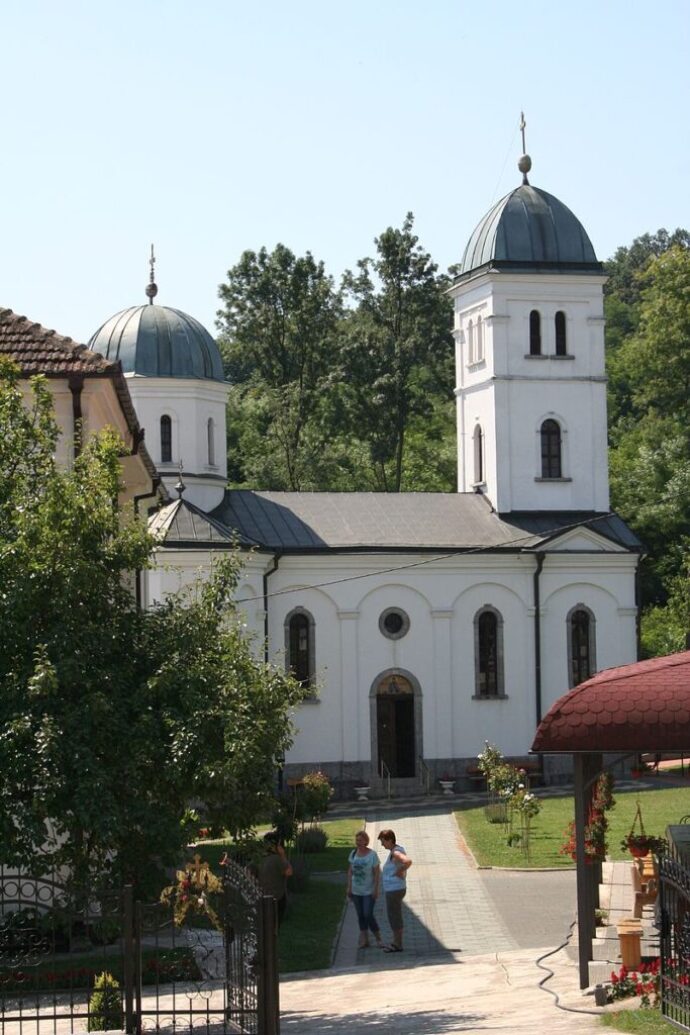
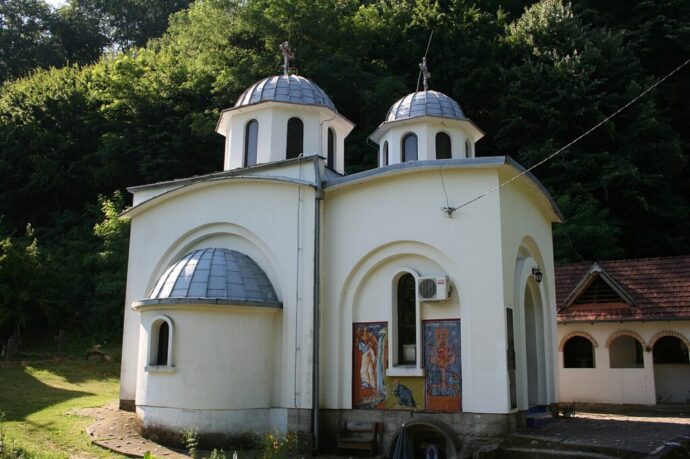
Radovašnica Monastery
The Radovašnica Monastery, an oasis of spirituality on the slopes of Mount Cer, hides a rich history dating back to the Nemanjić era. It has been mentioned in written records since 1548. Dedicated to the holy Archangel Gabriel, this monastery has often witnessed stormy events. Burnt, demolished, but never broken, it survived the invasions of the Turks and the horrors of the First World War.
After the destruction, the reconstruction began, and the monastery got its new glory. However, the autumn of 1941 brought a new tragedy – the retaliation of the German army after the failed attack of the Partisans and Chetniks on Šabac. The monastery was razed to the ground on October 12, 1941.
After the Second World War, reconstruction began, and work has intensified in the last ten years. A new chapel and a new inn were built, and the reconstruction of the ruined monastery church on its old foundations will soon begin. Radovašnica Monastery stands proudly as a symbol of survival and spiritual strength.
Orthodox Church of St. apostles Peter and Paul
With the arrival in Šabac and the appointment of Jevrem Obrenović as the Prince of Nahija, as a man inclined to progress and development, the dilapidation of the old Serbian Orthodox Church was noticeable. He decides to build a new church. The construction of the church dedicated to Saints Peter and Paul began in 1827 and was completed in September 1830. The church was built in the most beautiful place in the city, in the very center. With minor changes and repairs due to demolition in the First World War, it has been preserved to this day. The interior of the church was originally painted by the Russian Andrei Bitsenko. The artistically valuable iconostasis was made in the period from 1853 to 1855 by Pavle Simić. In the same period, the decoration of the church was done by Jovan Klajić. In the bombing of 1914, the iconostasis was damaged, so some of its parts were replaced by the works of Šabac painter Stevan Čalić, in the thirties of the 20th century, when, as later, the painting was changed and supplemented.
In the doorway of the Sabaka Orthodox Church, above the memorial ossuary, stands a monument built in honor of those who died in the Balkans and the First World War. It is the work of the sculptor Dinčić and was discovered in 1934. The monument is a testimony to the generations about the suffering that Šabac, who was called “Serbian Verden” because of his martyrdom, survived at the beginning of the 20th century.

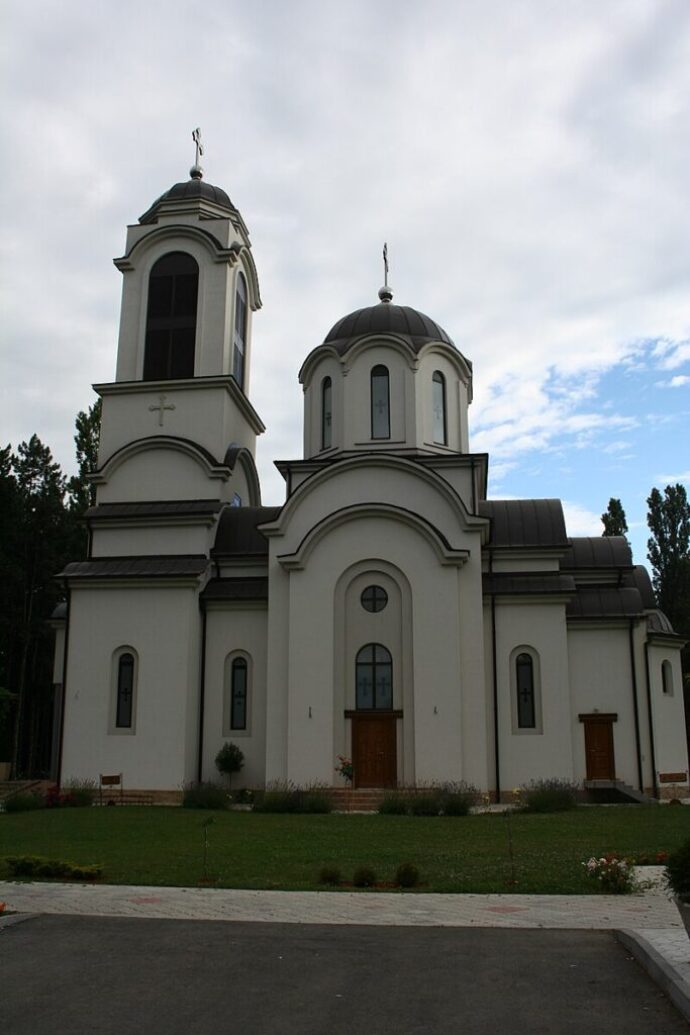
Church of the Holy Trinity
In Šabac, in a place known as Letnjikovac, rises the magical Church of the Holy Trinity. The start of construction dates back to 2007, and the imposing building was completed in 2014, right on the day of the Holy Trinity. That day was special because Bishop Lavrentije served the first Holy Hierarch’s Liturgy in this temple.
In addition to the usual services and religious rites, three significant manifestations are especially cherished in the Church: first, the glory of the Church – the feast of the descent of the Holy Spirit on the apostles, the Holy Trinity, which is celebrated on a variable date; then, Christmas Eve on January 6 and the lighting of the Petrovdan lilacs – Ljiljana on July 11.
The Church of the Holy Trinity has become an oasis of peace for all visitors. From the youngest to the oldest residents, everyone can enjoy the beautiful ambience and the hospitality of the clergy. Apart from being often a destination on the tourist map, the Church of the Holy Trinity is also known for the many humanitarian events that are organized in its vicinity.
Roman Catholic Church of St. Joachim and Anna
Although there are few written traces about the parish of St. Anne, the Catholic faithful have been present in Šabac for a long time, due to the proximity of the borders with areas inhabited by a majority Catholic population. A greater arrival of the Catholic population in Šabac was noticed only after the First World War, among whom were educated specialists and craftsmen that the city lacked.
In June 1928, digging for the foundations of a new church began in a part of town called Bair, near the railway station. The solemn blessing and laying of the foundation stone was performed on July 29, 1928 by Fr. Krsta Belamarić. The solemn consecration took place on October 21, 1928, while the two side altars were consecrated on November 3, 1935. The linden statues, which are still in the church today, were made by Dragutin Horvat from Domžal.
The area of the parish includes Šabac and the area below Belgrade all the way to the Bosnian border. In addition to the Franciscans, the parish was led by Salesians, diocesan priests, and now priests of the Neocatechumen way. The Sisters of Mercy of St. worked in Šabac. Vinko Paulski.
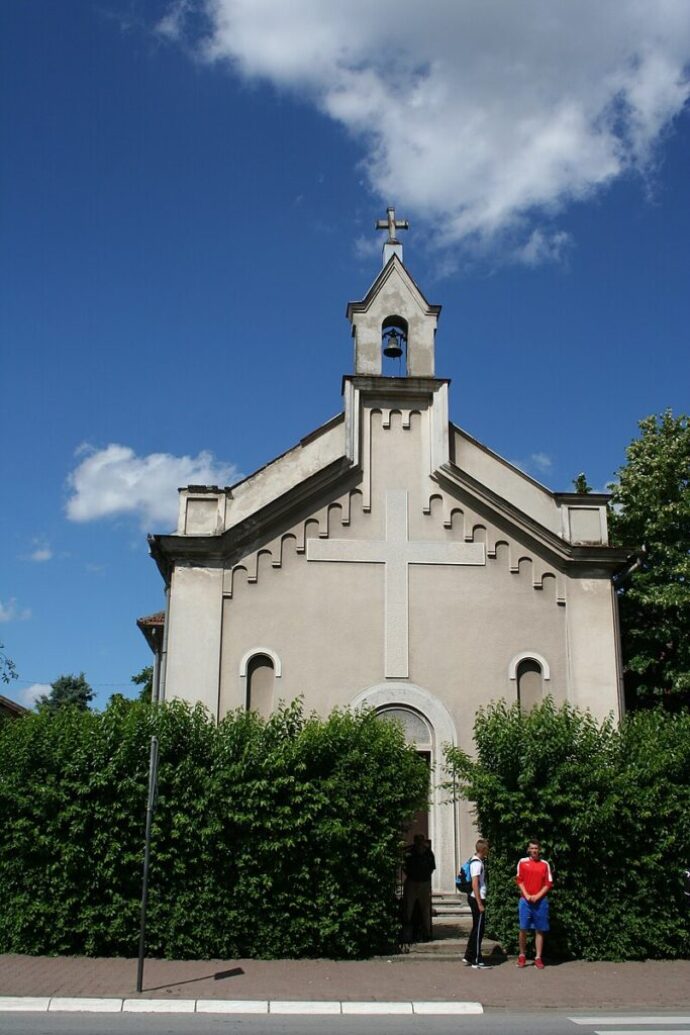
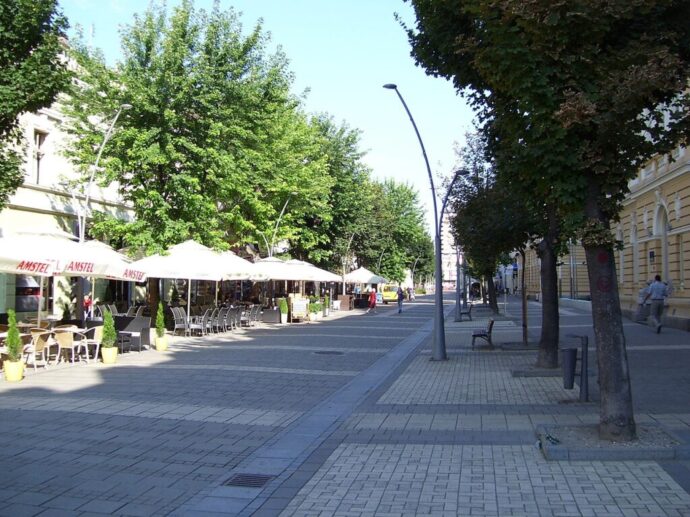
Lord Jevremov
Gospodar Jevremova street, a unique monument complex with a pronounced historical and urban value. This part of the old city center was declared in 2006 as a cultural and historical entity of exceptional importance.
Gospodar Jevremova Street has played a significant role throughout the centuries in the center of public life in Šabac. A former shopping center, it got its name back in 1890, on the occasion of the centenary of the birth of Jevrem Obrenović. After the Second World War, it was named Marshal Tito Street, and the old name was returned only in 2000.
Over the centuries, impressive buildings have sprung up in this place, i.e. representative buildings of wealthy citizens, intended for housing and trade, but also public purpose buildings that dominated with their size and appearance.
In addition to preserving its authentic identity, Gospodar Jevremova Street has gone through a period of revitalization and protection. In 2002, the Institute for the Protection of Cultural Monuments from Valjevo carried out an evaluation of the entire street, created urban and architectural documentation and a conceptual project for protection and revitalization.
This street has preserved its basic function and today is the heart of Šabac life, a lively shopping area, a cultural event scene and a favorite promenade.
Stari Grad fortress
The Stari Grad fortress is like a living time machine, a witness to the stormy history of the Šabac region, leaving behind many material traces that still bring the past to life today. The longest period of development of the city, which has been dominating the historical stage for more than five centuries, is related to the Turkish conquests and rule. From that period stands out an impressive motif that still tells the story of those difficult, but also glorious times – the Fortress on the right bank of the Sava, known as the Old Town. It is located about 1 km from the center of Šabac, and with its surroundings transformed into a picturesque recreation center, it has become a favorite destination of Šabac residents.
The fortress is surrounded by a charming landscape and a city beach on the Sava River, where youth, laughter and dance come to life during the summer. The remains of the fortress stand dignified as a silent witness of centuries-old struggles for power, testifying to how important a role Šabac, as a border town, played throughout its rich history.
The tourist and recreational complex Stari Grad has become the epicenter of sports events in Šabac. Kayakers, wrestlers, shooters, divers gather here. In addition to sports activities, visitors can enjoy basketball, athletics, table tennis, volleyball and numerous other recreational activities in the Old Town. This complex is a place where the past meets the present, creating a unique atmosphere that attracts all lovers of sports and recreation.
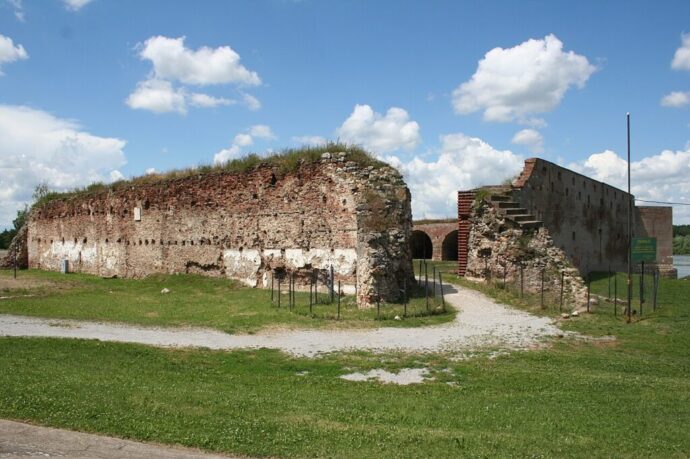
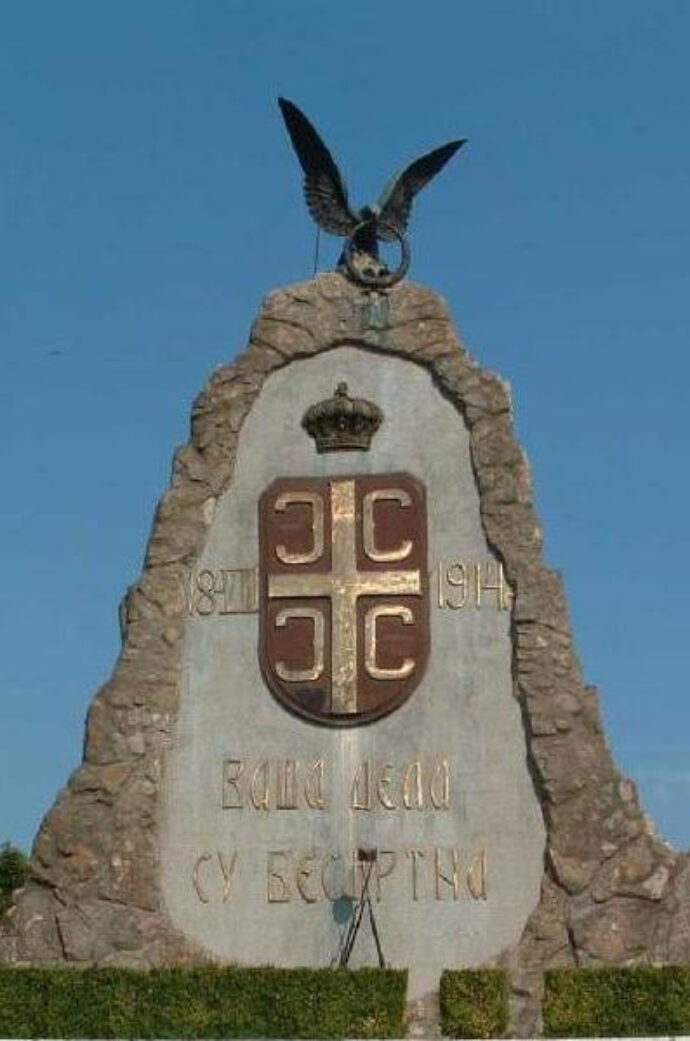
Memorial complex Tekeriš
The Tekeriš memorial complex, a symbol of the courage and determination of the Serbian people during the First World War, is the place where the decisive battles between the Serbian and Austro-Hungarian armies took place. On the slopes of Mount Cer, in the village of Tekeriš, a battle took place from August 15 to 19, 1914, which marked a turning point in the Cer operation. The Serbian army triumphed over the Austro-Hungarian army, defying the numerical superiority of the enemy. This place preserves the memory of 16,304 Serbian fighters who gave their lives, while the Austro-Hungarian side had losses of 25,000 soldiers.
The memorial ossuary, discovered on June 28, 1928, is located in the center of the village. Around 3,500 Serbian soldiers rest within its walls, as well as Czech soldiers, members of the 28th Prague Regiment, who bravely marched towards the Serbian positions with the song “Hey Slavs” to surrender. The memorial ossuary has the shape of a natural rock 10 meters high, whose foundations preserve the remains of fallen warriors. On top of the monument is an eagle with spread wings, holding a laurel wreath in its beak, while on the front, western side of the pyramid there is a shield with a cross, four eyes, a crown, the date “August 18, 1914.” and with the inscription “Your works are immortal”.
On the pedestal there are seven memorial plaques with dedications and figures of Duke Radomir Putnik and Duke Stepa Stepanović. The monument is the work of the architect Bojić. North of the ossuary there used to be a chapel, in which the National Museum from Šabac installed an exhibition about the Battle of Cerska after the Second World War. Busts of Dukes Radomir Putnik, Stepa Stepanović, Živojin Mišić and Petar Bojović were placed in front of the entrance to the Museum in 1989. At the entrance to the complex, a memorial stone fountain with benches and a porcelain painting of Duke Stepa Stepanović was erected. Conservation works were carried out in 1964, 1989 and 2004–2005. years.
Mišar
The mystical place of Mišar evokes memories of the turbulent past and heroic feats of the First Serbian Uprising that broke out in 1804, after centuries of Turkish rule. The area of Šabac was the epicenter of the most intense fighting of that time. A large and significant battle was fought on Mishar, on August 13, 1806. The Battle of Mišar marked the first victory of the insurgents over Ottoman rule, which was a huge step towards liberation from Turkish domination. The Serbian insurgents led by leader Karađorđe Petrović bravely opposed the superior Turkish army arriving from Bosnia under the command of Sulejman Pasha of Skopljački. Many Serbian heroes stood out for their bravery in this battle, among them pop Luka Lazarevic, Miloš Stojićević – Pocerac, Jakov Nenadović, Stojan Čupić – Night Dragon, Cincar Janko and prota Smiljanić.
A hundred years after this historical event, the Monument to Karađorđe and the Mouser Heroes was erected, which dominates the center of the village. In the eighties of the last century, not far from the monument, a museum exhibit dedicated to this important event was opened. This memorial complex and the museum exhibit testify to the heroism and determination of the Serbian people in the fight for freedom and independence.
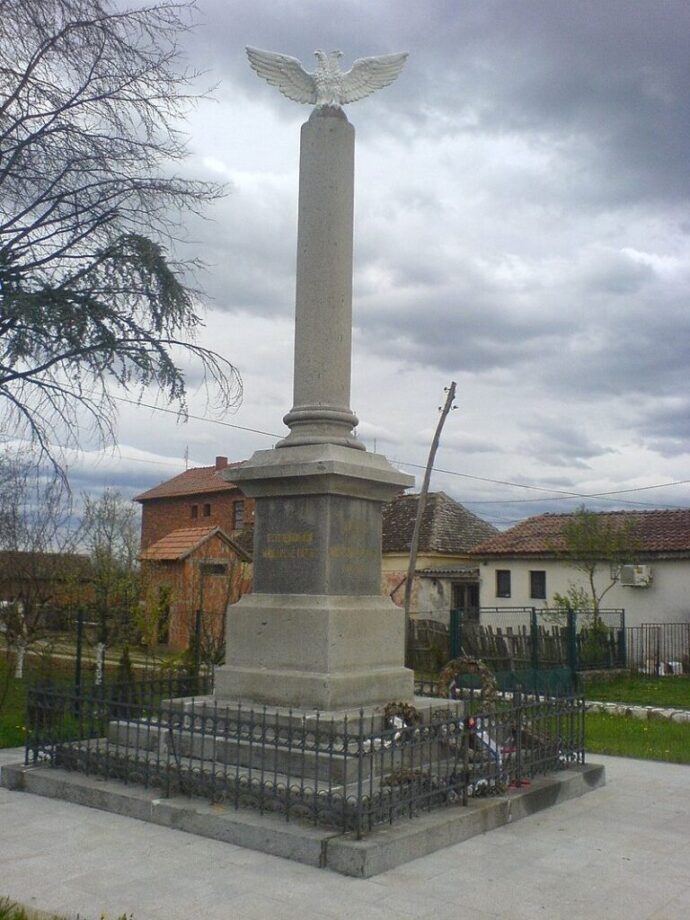
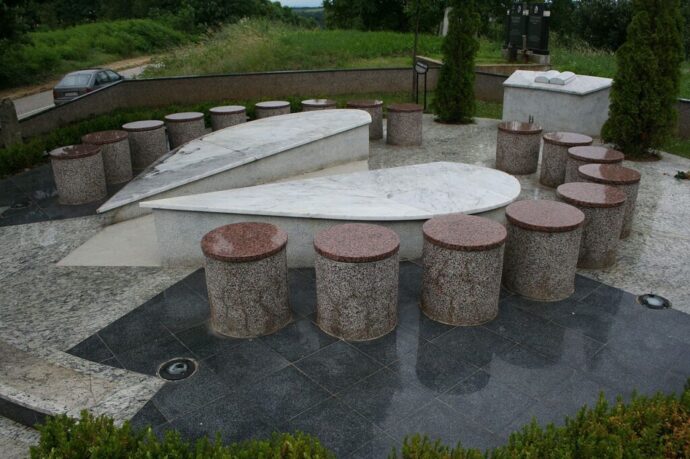
Ashik’s grave
Asik’s grave, a mystical place, transmits a mysterious story of passionate love, like the Serbian version of “Romeo and Juliet”. Located in a secluded corner of Metlić, approximately 30 kilometers from Šabac, this monument is a symbol of eternal love that ended tragically. Legend has it that Pavle and Đula, two young lovers, faced a merciless fate that led them into the arms of hungry wolves. At the place of their unhappy love, there is a stone monument with an engraved symbol of their downfall – a severed hand. But this story will not remain only in verse; the construction of an impressive memorial complex is planned, which will soon become an indispensable part of the tourist offer of our municipality. Get ready to dive into this dramatic story of love, tragedy and hope as you uncover a mysterious past waiting to be uncovered.

